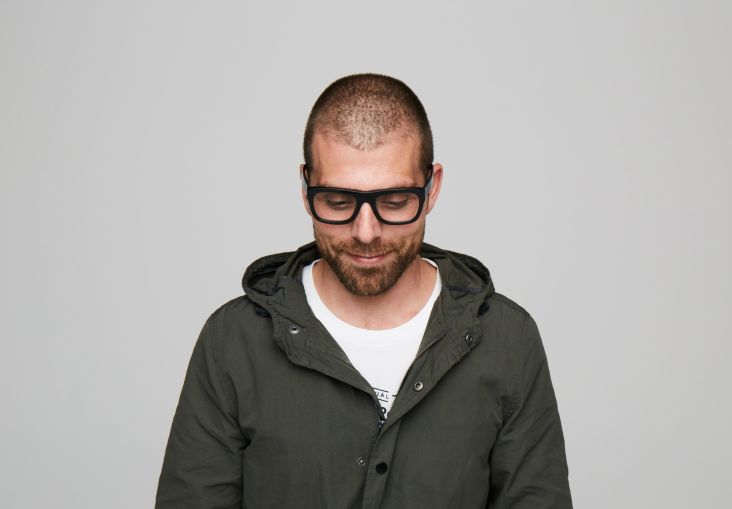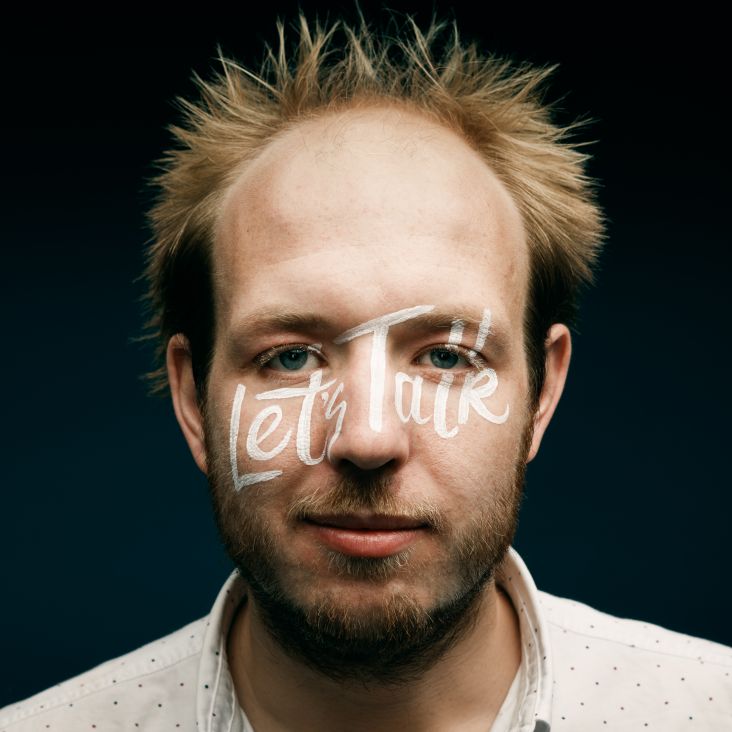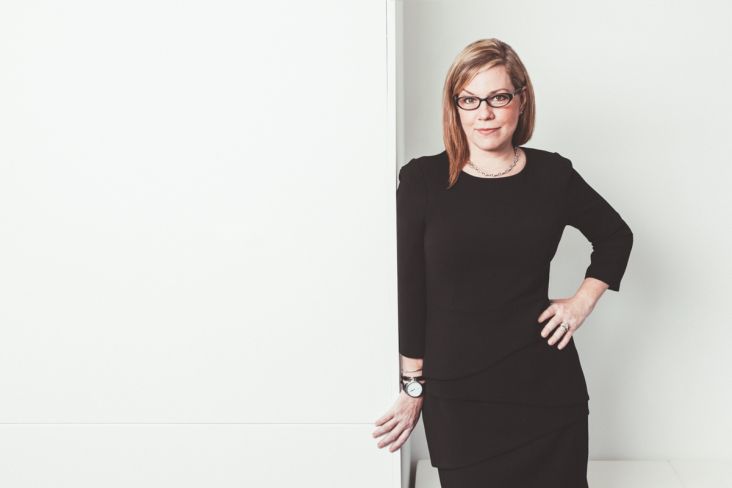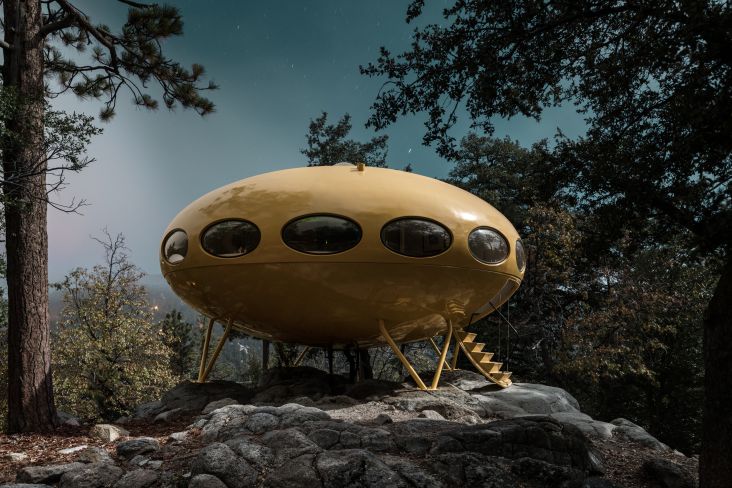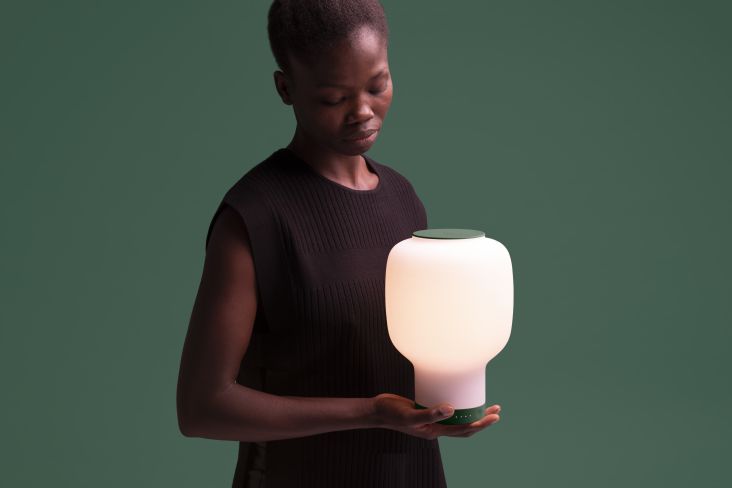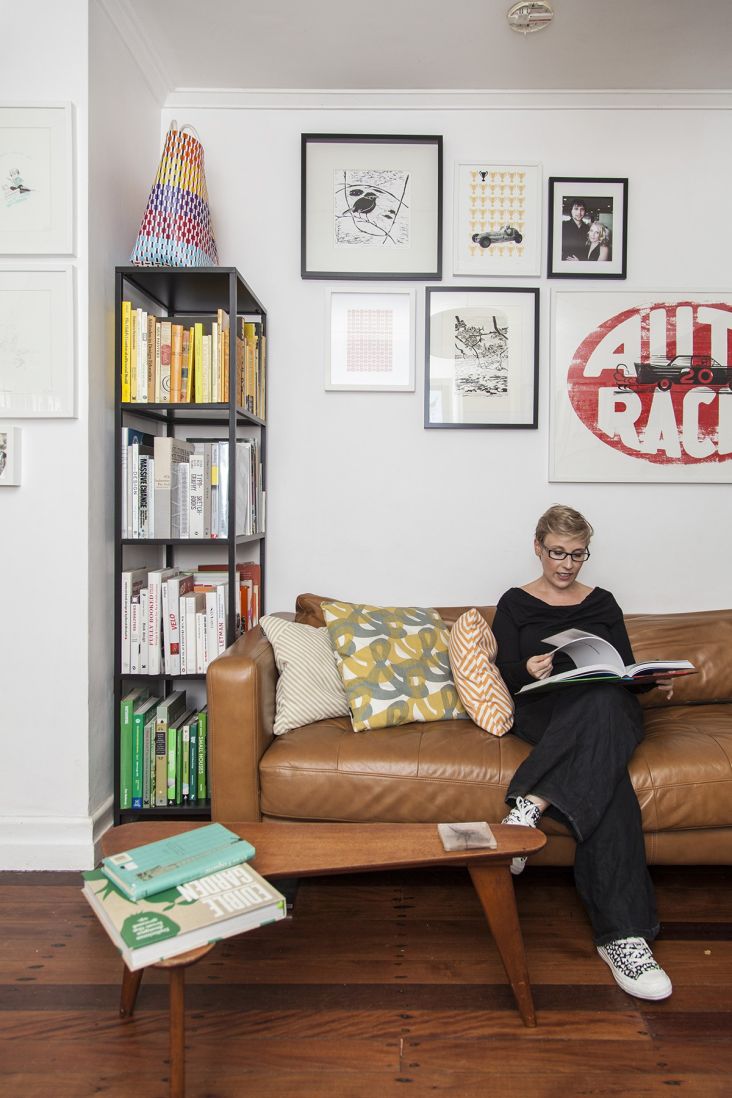Ian Paget of Logo Geek on side projects, hard work and not being afraid to try new things
When it comes to side projects, Ian Paget has seen and done it all. The Manchester-based graphic designer has spent the last five years working on everything from a popular blog called Logo Geek with its own podcast to building a passionate design community online.
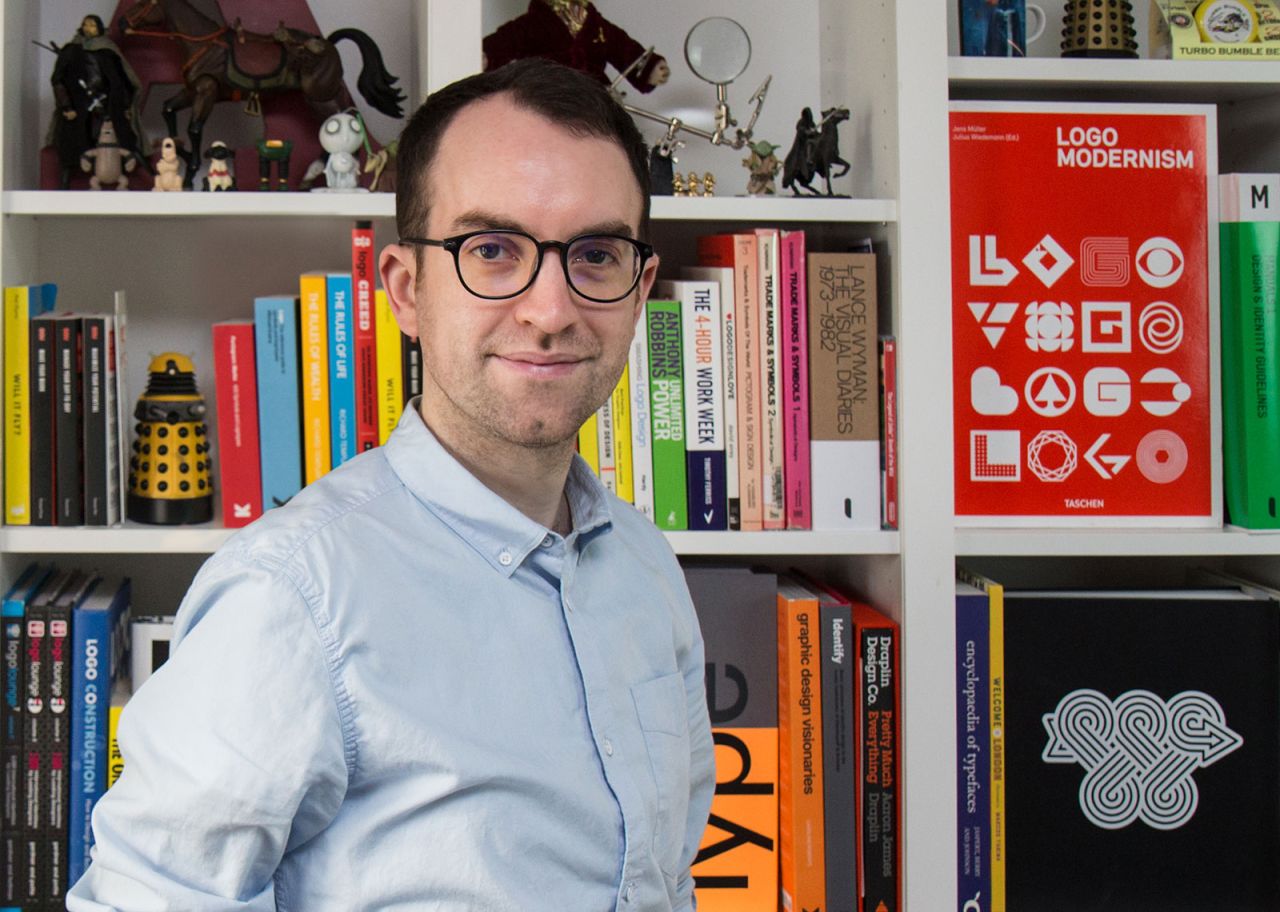
But it wasn't deliberate. Having nearly 100,000 Twitter followers and 4,000 loyal members of Logo Geek wasn't something Ian set out to achieve – it all just naturally happened, born out of a desire to learn more about creating logos. We spoke to Ian about this and much more.
Tell us more about your creative journey so far
I’ve been working as a graphic designer now since 2006, and throughout that time I’ve made an effort to practice and learn more about design in my spare time by working on side projects.
At the time of starting my blog, Logo Geek, I was working for a web design agency, and occasionally I was asked to design a logo. It was something I enjoyed a lot as it combined my interest in art, technical illustration and science. The problem was, those projects very rarely came up, and because of that I felt that my logo design skills were never improving, but I was keen to learn more.
Outside of work, I had just completed a long-term side project developing an iPhone game, which had been ongoing for almost four years. It was a great experience, but it was also very demanding on my personal time. I made the decision that I would only ever work on short-term projects and after it was suggested by a friend, I felt logo design was the ideal solution.
Thus, Logo Geek was born. A logo design service, which I planned to offer to friends and family.
I started out with a simple website, where I slowly added my work, and where I would write blogs about the things I had learned. Within a short period of time, I had converted some friends into clients. Then, after some time, I had a "real" client approach me for work, which blew my mind!
I had not intended to begin officially freelancing on the side, but once I learned that I could make a side income from the service it pushed me to put more effort into marketing, writing more and generally putting myself out there. I rarely had free time, but when I did, I would add something new or tweak something I think could be better.
After five years, Logo Geek has become more than I ever imagined. Today I rank highly on Google for key terms such as 'Logo Design', which results in a large number of inbound leads. My social media following has grown to over 93,000 on Twitter alone. I’ve had my work featured in books and magazines. I’ve built a highly active Facebook community. I’ve been on the juries for numerous international design awards, alongside my idols. I’ve also faced my fears and created a podcast series, where I get sponsored to interview my heroes, which receives on average over a thousand downloads per episode. It’s crazy!
Two years ago, although it was never my goal to go freelance, I made the decision to focus full-time on Logo Geek. However, after handing in my notice, my employer kindly offered a part-time position which gave both balance and financial stability. It was a win-win situation.
So this side project has been very good to you, hasn't it?
It really has been. It’s now become my main source of income and opened up so many doors that I never knew existed. The past few years have been exciting, and I feel that the journey has only just begun.
I feel that Logo Geek has changed my life, both personally and professionally… and my future too. I have long-term plans for what I want to do with the brand.
Side projects are a great way to raise your own profile. What key lessons have you learned?
I’m really surprised with how much you can achieve from setting aside just a small amount of time each day.
Because Logo Geek was something I did on the side, I never really felt like I had the time to make anything of it. However, I learned that small incremental steps towards a goal do add up. Be that a social post, a piece of content, an image, a podcast interview – once created, those things never go away.
Most people get distracted so rarely achieve anything, but if you can spare just 30 minutes a day to work on the same goal for a year, you would have invested over 182 hours into your project. Imagine what you can achieve in a lifetime!
You've got an enormous Twitter following. Has the platform helped?
I’d actually go as far as saying that it’s probably been the driving force for a lot of what I am doing today. I feel a real commitment to my audience, and I try to create content for them.
I started working on Twitter every day, and it would be one of the first things I would focus on each morning – no matter if I felt like it or not. I thought that consistent daily posting and interaction would help to grow Logo Geek, and I was right. It’s caused me to be seen as an influencer which has attracted opportunities I believe would otherwise be impossible, and a lot of those opportunities have helped with my Google search results too.
For example, I was invited to contribute logo design related blog posts to Creative Bloq, which I believe is one of the most authoritative graphic design related blogs in the UK. By writing for them, I receive high-quality links back to my site, which shows Google that my site has some credibility. With every blog post or interview, I get back-links, which helps with my websites SEO whilst also growing my audience, which attracts more opportunities. My influence on Twitter really helps to drive everything.
Having an audience has also helped to bring a passive income through affiliate marketing and sponsorship. In the past year, I have started a podcast, which is sponsored by FreshBooks – I can do anything I want with the podcast, as long as I mention them, so I’ve built a platform where I can talk at length to my heroes and idols, and freely share those conversations with others. It’s amazing to be in the position where I can get paid to do what I want to do.
The connections I’ve made over the past year have been incredible, and that’s mostly thanks to my daily Twitter activity. I’m learning so much every day, and I really do feel like I’m heavily involved with the design community which is exciting.
You now work part-time in Manchester. How does it feel to be focusing more on Logo Geek?
The past two years have been quite a roller coaster, with lots of ups and downs.
You might be surprised to hear this, but the first six months I honestly hated it. But thankfully now things are really great.
Before taking the leap, I imagined all the exciting things I could start doing – I would finally have the time I wanted to write more consistently, to start my book, to build training courses, to work on communities etc. But, the reality is that none of these things directly make any money, and they take a lot of time.
I struggled to work from home. I started having lie-ins and was losing time. I felt distracted and lazy. I felt depressed that I wasn’t doing anything I wanted to other than client work. I wasn’t doing the things I really wanted to do.
It’s not easy being your own boss. You make all the decisions. Nothing happens unless you make it happen. You’re responsible for everything. Working for yourself is tough, and there are so many distractions.
But thankfully, I started to learn how and when I best work. I built an environment for myself where I feel inspired and productive. I found ways to make money before creating the content I wanted to create. I could work from anywhere so travelled more too.
Now it feels amazing. I have great clients. The community is growing. Everything is really coming together. Life feels exciting, and there’s still so much more I want to do.
It must've been a lot of hard work to make Logo Geek what it is today. Do you think people understand the time and effort involved?
It has been a huge amount of work, yes. Hundreds of hours over a number of years. I work on it daily… it’s part of my life now. There’s so much that happens behind the scenes that people don’t see, and so much client work that I’ve done that I’ve not yet shared due to lack of time. It’s a daily grind, and I know I’ve worked hard on it.
I think with anything it’s hard to see the work that happens behind the scenes – people will look at what’s there now and not realise that it’s been a gradual process from just one person.
The community is certainly one area where members are not aware of the effort needed to maintain a level of quality. It takes a lot of daily effort to moderate, and it’s surprising how many fights you need to defuse in a logo design group! I guess that’s what happens when you pull 5,000+ people together in one place.
The podcast is also much more work than it appears. A one hour interview takes considerable time and planning. From sourcing guests to preparing for the interview, editing the audio, putting show notes together, and promoting the show too. It’s tough work, and very time-consuming. I suffer from anxiety too, so it’s something that’s really outside my comfort zone.
Those who have followed me from the start know I’m a hard worker, and that I put in the time.
Do you have a favourite logo?
It’s so hard just to pick one, but I’m a big fan of the MyFonts logo. On first look, you’d think it’s just a nice hand-lettered design, but if you look closer it’s actually a hand reaching out to grab fonts! It’s such a clever idea and so well executed.
Have you ever had any strange requests?
I once had a very genuine enquiry for a logo for a company called Chococock… I’ll let you imagine what they did.
Aside from Logo Geek, what else do you enjoy doing?
I really love travelling, and it’s probably one of the things that drives me to work so hard. In the past two years, I’ve been to Thailand, Hong Kong, Cambodia, Miami and Mexico. Next week I’m heading to Barcelona.
I’m also a bit of a movie geek. My office is surrounded by toys from my favourite films, TV shows and games. From Daleks to Dinosaurs. I also collect autographs and have been lucky to meet superstars such as Christopher Lee, and almost all the main cast of Lord of the Rings and Star Wars.
I’ve just started model making too. On my desk, I have a fresh block of SuperSculpey, and plan to sculpt robots, aliens and monsters! It’ll be a nice creative outlet that gets me off the computer.
Since graduating 10 years ago, what has changed for the better? And for worse?
I never actually formally studied design. I was lucky in my early career to find an opportunity within a company where I could use my artistic skills as part of an admin job, which developed into a full-time design role.
Since starting out, the Internet has really changed things. When I began as a designer there was no YouTube. I had to learn from those around me. Now there are endless free videos that will teach pretty much anyone around the world to be a designer, and the quality of that free education is becoming better and better, and easier to access.
The design communities are also much more connected thanks to platforms such as Facebook. It’s so easy to find likeminded designers who you can learn from, and we’re all driving each other forward. The design community is very supportive and helpful.
For worse, there are now more crowdsourced design sites who exploit young and inexperienced designers. There are also more AI-driven platforms that are slowly getting better, which are taking away the lower end of the market that’s ideal for students. More access to education is also meaning there are more designers out there – some good, some bad, making it harder to stand out from the others since it’s such a crowded space.
Designers need to be savvier when it comes to marketing and positioning so that they can shine… and thankfully because of the Internet, it’s easier than ever before to learn how to do that and take action too.
I genuinely feel that we are all in a very exciting time thanks to platforms such as YouTube, Google and Facebook – in the grand scheme of things they are young platforms, and we are the first generation to experience it. There’s so much opportunity out there because of it.
What advice would you give to others, hoping to make a successful career in graphic design?
You need to show your work and be passionate when you talk about it.
I’ve known people in the past to hide their work from others due to being shy, but you need to get past that and start sharing your work so that people can see what you’re capable of doing – anyone is a potential client, so get used to showing it to everyone. In the design world, it’s your portfolio and design capability that matters above qualifications, so focus on doing great work and sharing it with the world.
Be honest with what you’ve done too. When you start out it’s easy to start comparing your work with designers that have been in the industry for 10 years or more, and putting work in your portfolio that’s not a true reflection of your ability.
A good creative director will appreciate honesty, will see potential in your early work and will be able to give you opportunities to refine your craft. If a company is seeking a junior designer, you don’t need to pretend to be something else.
Attitude also matters. People employ those who they think will be great to work with. A decent designer with a good attitude is more employable than someone who’s arrogant yet the most amazing designer. Be a good person. Be friendly. Be honest. People will appreciate that.
And lastly, take advantage of design communities. Find mentors. Ask questions. Learn from others. There are so many great designers out there who are willing to give up their time to help, but not many people pluck up the courage to ask.
Has there been anyone who has influenced you?
I can list out a lot of people, but a few people that have been key include David Airey, Paul Rand and Pat Fylnn.
When I started out I really looked up to David Airey. How he presented his work. How he wrote content. How he shared content with others. His books are incredible – I learned a lot from, Work for Money, Design for Love, and believe that was the book that led me to start Logo Geek. He’s such a nice guy, and I’m honoured to have got to know him personally over the past few years.
Paul Rand is the person who I would describe as the God of logo design. If I was to take advice from just one logo designer it would be him. His wisdom that’s preserved in books is incredible, and I imagine it will carry down through all of history.
And finally, Pat Flynn, who’s best known for Smart Passive Income, has taught me a lot about affiliate and online marketing through his podcast. I love his honest approach, and I hope to run my business with just as much passion and transparency as he does. I was also lucky enough to meet him in person last year to thank him for all the help.
I wouldn’t be where I am now if it was not for the above, and all the others who have helped me along the way. It’s why I want to do the same for others.

















